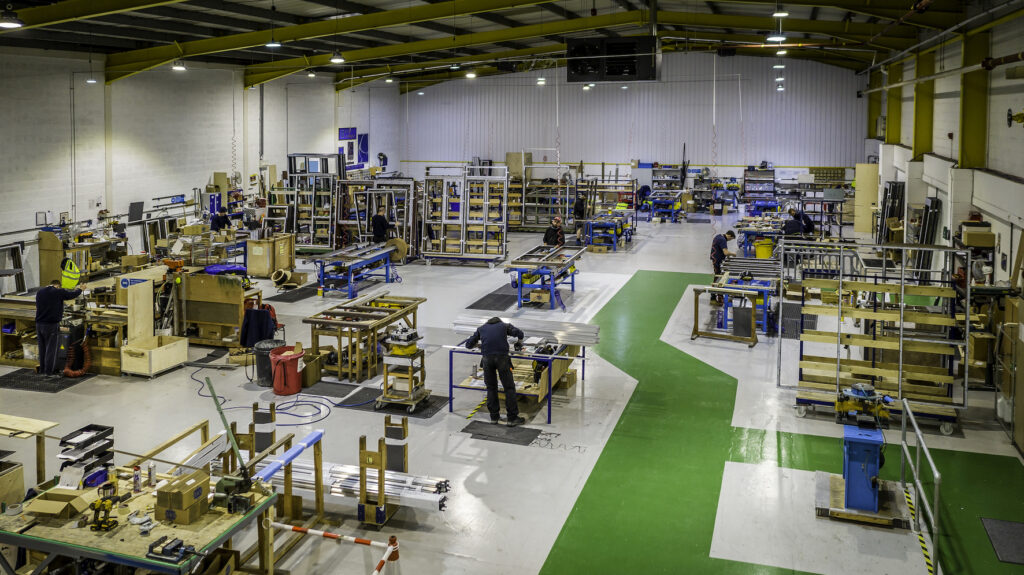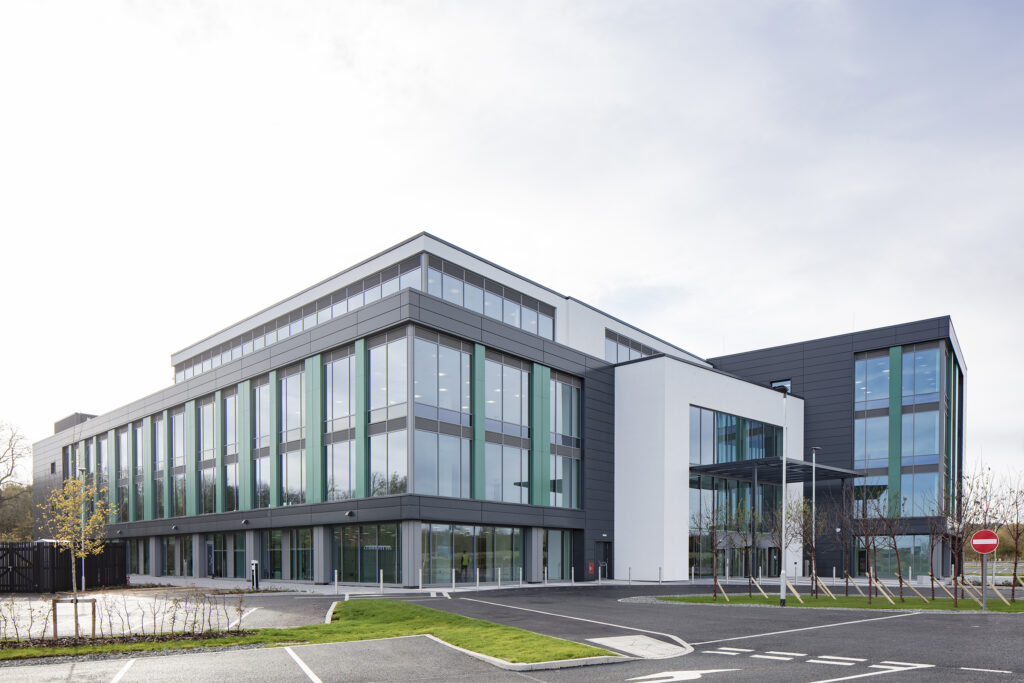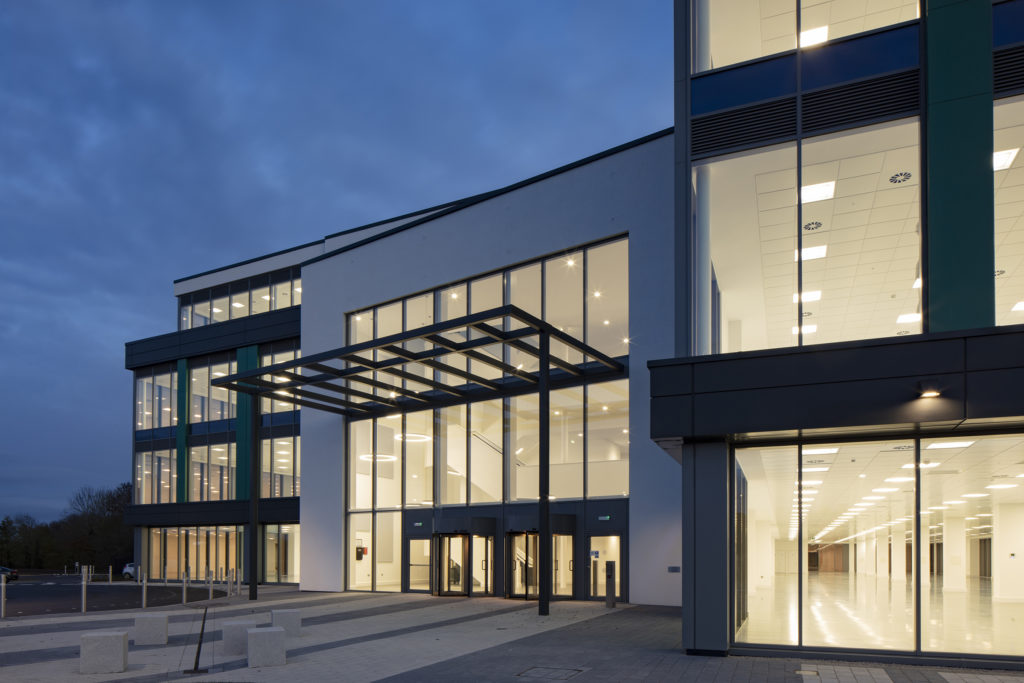The commercial sector’s transition to net zero is expected to accelerate in 2024. Something which will directly translate into property values.
The construction and specification sectors have a critical part to play in supporting the UK’s journey to Net Zero.
And at the start of 2024 the link between a building’s carbon footprint and its value has become more clearly delineated than ever before.

“New builds are pushing boundaries of building performance to ever increasing levels of energy efficiency, lower running costs and lowered environmental impact”, says Paul Stevens, Managing Director, Acorn Aluminium.
“That has an impact on the commercial value of older properties which come with higher running costs and a larger carbon footprint.
“That doesn’t sit well in the Net Zero era. Commercial property management companies face a choice. Either reduce rents – or take steps to improve the performance of their investments.”
Full disclosure
While societal pressure and the expectations of increasingly eco-conscious investors is one driver, regulation is expected to be another.
The CBRE has said that it expects commercial property disclosure frameworks, IFRS S1, and TPT Transition Plans to become mandatory as early as 2024.
“This would put pressure on commercial landlords to put it all out in the open”, Paul continues. “Ultimately it’s a positive because it allows companies to make informed decisions about their estate.
“It does, however, create a challenge for commercial landlords who have portfolios which perform less well environmentally.”
The impact of climate change on building design and performance
“The other element to consider is the more fundamental one of the comfort of those working in older buildings”, Paul continues.
“Our world is warming and building design is as much about keeping the heat out as it is keeping it in.
“Older buildings, even those built only a few decades ago fall significantly short of today’s standards for solar control.
“It contributes to a more challenging outlook for older commercial properties but not an impossible one.
“Refurbishment can deliver a major uptick in performance and inject new appeal into buildings which would otherwise fall short of tenants expectations of carbon footprint and operational costs.”
Case study: Breathing new life into older buildings
Acorn Aluminium has extensive experience in the supply of curtain walling and commercial aluminium windows and doors into challenging refurbishment programmes.
This includes recently completing a project to design, manufacture and install, more than 4,000m2 of energy efficient curtain walling and windows to a combined new build and refurbishment scheme in the centre of Leeds.

Leonardo Building is a £62million 473-bed student accommodation scheme by McLaren Property designed by architects Cartwright Pickard and delivered by main contractor Robertson Construction.
This included the conversion of the city’s Grade II listed Victorian print works, Leonardo Buildings and Thoresby House, in addition to the conversion of a connected 1990s extension to the building, built to accommodate Leeds City Council’s Housing Department.

Acorn Aluminium supplied a fully capped curtain walling to the scheme in Senior Architectural Systems flexible and highly energy efficient SF52 curtain walling system, achieving u-values as low as 1.3W/m2K and 466 tilt-and-turn windows, plus barrier loaded and pre-tested perforated panel vents, to the six-storey scheme.
This delivered a significant uptick in building performance.
Case study: Next generation performance in low carbon new build
Alongside a wide range of refurbishment schemes, Acorn has also supported the delivery of a new generation of low carbon buildings.
This includes a 10,000m2 four storey office building, constructed as the flagship office for The Access Group, one of the country’s fastest growing technology companies at Loughborough University Science and Enterprise Park (LUSEP).

Acorn Aluminium was appointed by Wates Construction in March 2019 on a design, manufacture and install agreement, to supply more than 3,000m2 curtain walling to the project, plus feature panel cladding and doors.
Working with our supply partner, Technal, we were able to develop a highly innovative solution which supported the main contractor in minimising the carbon footprint of the project by using the Technal MX Curtain Walling System.
Using an advanced thermal breaking system and pairing it with a high performance glass option, we were able to achieve u-values of 1.4W/m2K, adjusting glass specifications to either maximise or minimise solar gain depending on the aspect of the elevation, increasing the energy efficiency of the building through-life.

We also, however, were able to go a step further by using the Hydro/Technal Circal 75R solution, which is made with a minimum of 75% recycled end-of-life aluminium/post-consumer scrap. This cuts energy consumption in manufacture to just 5% of that used in the production of primary metals.
Closing thoughts
“Upgrading the performance of older commercial buildings can present unique challenges but also significant opportunities to lower carbon footprint.”, Paul says.
“We have extensive experience in the refurbishment space, working in partnership with main contractors to deliver step changes in the performance of pre-existing and often older buildings.
“This includes development of innovative solutions which balance the delivery of solutions which support lower running costs and lower carbon through-life, and cost.”
For more about Acorn Aluminium please call 0115 928 2166, email [email protected] or visit www.acornalumnium.com
